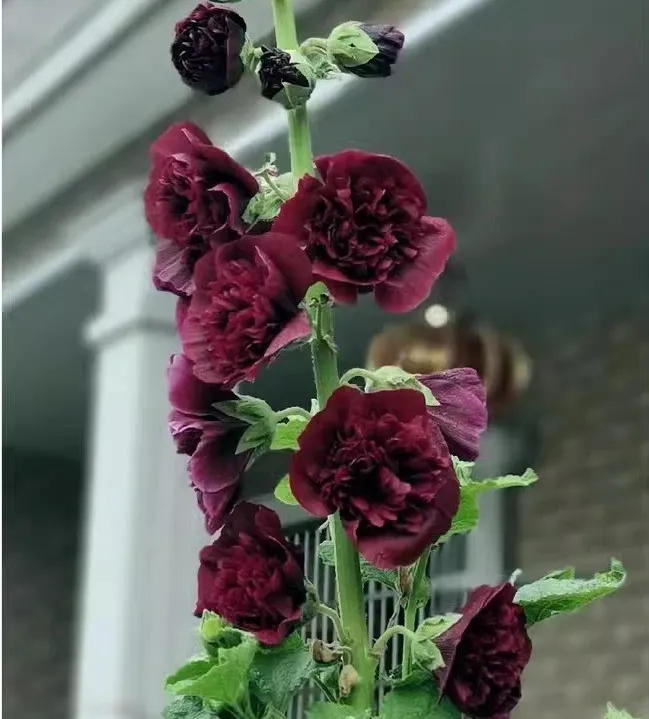What are the recommended representative plants for the Dragon Boat Festival?

Share with
The Dragon Boat Festival is not just about eating zongzi and dragon boat racing – many traditions are actually related to plants and flowers! Today, let’s get to know six plants associated with the Dragon Boat Festival.
### Hollyhock
Hollyhock is a tall plant with vibrant flowers in red, pink, white and other colors, blooming splendidly during the Dragon Boat Festival. In rural areas, it grows wildly in summer, adding beauty everywhere. It’s extremely hardy, drought-resistant and tolerant of poor soil – simply scatter seeds, and it will grow into a sea of flowers with minimal care.
### Mugwort (Artemisia argyi)
Mugwort is the most iconic festival plant. Its leaves are deeply pinnately lobed, covered with grayish-white绒毛 (fuzz), and emit a rich, unique aroma. Every part of mugwort is valuable: it has anti-inflammatory and hemostatic properties and can warm the meridians to dispel cold. Fresh mugwort is used to make qingtuan (glutinous rice balls), which are soft, sticky and fragrant; when dried, it can be made into moxa sticks, a key tool in traditional Chinese medicine physiotherapy.
### Calamus (Acorus calamus)
Calamus is often paired with mugwort. Its long, upright leaves resemble swords, giving it nicknames like "water sword grass" and "pu sword." Although the entire plant is toxic, it contains volatile aromatic compounds that effectively repel mosquitoes. After proper processing, it can be used in traditional medicine to resolve phlegm and open the orifices (improve mental clarity).
### Chinese ixora (Ixora chinensis)
Belonging to the Rubiaceae family, Chinese ixora blooms in clusters resembling hydrangeas, hence another name "water hydrangea." It is the national flower of Myanmar, with the花语 (floral symbol) of "striving to be the first," embodying a spirit of positivity. Thriving in warm, humid environments, it suits southern courtyards, while northerners can grow it in pots and keep it warm in winter.
### Eupatorium fortunei (Chinese thoroughwort)
Like mugwort, Eupatorium fortunei has a strong aroma. Ancient people wore sachets filled with it, believing it could ward off filth and insects. Its leaves are broader than mugwort’s, with a fresh, non-irritating scent. As a traditional Chinese medicine, it dispels dampness and relieves summer heat, and also has anti-itching and anti-inflammatory effects to soothe mosquito bites.
### Pomegranate Flower
Pomegranate flowers bloom in full red splendor in the fifth lunar month, adding festivity to the Dragon Boat Festival. In traditional culture, pomegranate flowers symbolize good luck and are believed to ward off evil and attract blessings. They also have medicinal uses: petals can be brewed into tea to clear heat and detoxify; the peel can be入药 to astringe the intestines, stop diarrhea, and expel parasites.
Tagged in :




Leave a Reply